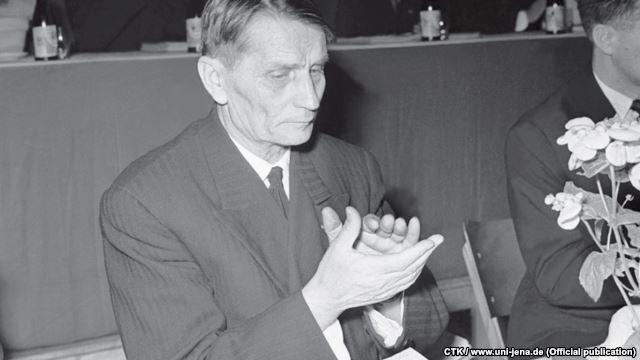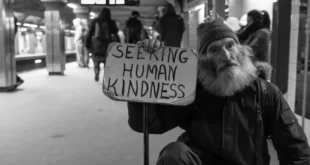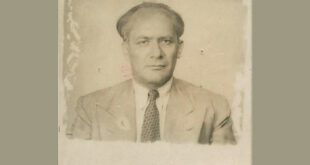
In dozens of cities before and this day will be held memorial events. The largest of them— “Return of names” — is holding a “memorial” at the Solovetsky stone in Moscow.
This year a memorial surrounds a lot of questions and doubts. Throughout Russia beginning to re-establish official and semi-official monuments to Stalin. The international society memorial and the Sakharov center who are studying the history of repression, fighting in the courts with the status of “foreign agent”. There is an argument that the repression was not, and that this invention the era of perestroika, invented to blacken the Soviet Union.
We asked the historian Sergey Bondarenko to tell you how to argue with such statements. This time our card is built around the most common of theses skeptics and revisionists questioning the history of the Soviet political terror.
“Repression is a myth, they never had”
To argue with the fact of existence of political repressions in the Soviet Union — a rather absurd exercise. Soviet repression is a relatively recent and well-studied phenomenon. Of course, you can argue with the fact that the Earth is round, but to prove it from the point of view of science will be difficult.
The problem with many disputes about the persecution that debaters are often mean by “evidence” are quite different things. They can operate on different “historical facts” and rely on a very peculiar ethics. From the huge volume of literature on the topic, of course, you can always pull out some arguments that help to justify any doubt.
In Russia this problem is particularly acute because there is no any built and respected community of professional historians. The opinion of the Minister of culture from the ridiculous to the thesis may be quoted along with the position of the researcher is seriously engaged in a specific historical question. Does not exist as such the boundaries between scientific and unscientific knowledge.
“Maybe some repression, but not a mass”
To count the total number of repression victims is really very difficult. In the case of “Red terror” (the first years after the revolution), collectivization or artificially organized hunger the first half of the 30 years we understand the scale of the event, but often nowhere to take the exact figures.
According to estimates of the society “memorial”, has more than 25 years involved in the collection of historical data and memories, we can say a minimum of about 13 million victims of state terror in Soviet times. And this is the bottom bracket, as it does not account for the millions of people convicted for administrative offences and “criminal”, such as work absenteeism or escape attempts from the places of exile and deportation.
In addition, the issue of “mass” also directly relates to the personal evaluation. Not less than 725 thousand documented executions throughout the Soviet Union during the two years of the Great terror (1937-1938) — a lot or a little in the eyes of your opponent skeptical?
“Most repressed punished”
Documentary history of mass terror says otherwise. The basis of repression of the Stalin era was the so-called bulk operations — for example, “repression of former kulaks, criminals and other anti-Soviet elements” July 31, 1937, which began the Great terror, and various “national operations” against the poles, against the Latvians against the Germans living on the territory of the USSR.
Their implementation took place according to the limits in every area down the plans for the arrests, which were necessary to perform. In the atmosphere of the ongoing “socialist competition” seemed a natural task is to “exceed the norm”, therefore, in the regions and republics was drawn up counter-plans — the need to further increase the number of arrests and death sentences. A huge number of people were arrested literally list image according to the materials of house of books, the names in the phone book. To see them as “enemies” or potential collaborators is possible only within a Grand conspiracy theory.
From a formal point of view a huge part of repression in the USSR was carried out in the bypass existed in the country of the law. “The most democratic in the world” – Stalin’s Constitution of 1936 had no connection with reality.
“The highest measure” in the second half of the 30-ies designed the “Troika” — non-judicial authorities, as a rule, consisting of the head of the local NKVD, party Secretary and the Prosecutor. Solutions imposed in the absence of the accused, in absentia, according to the case materials. Often it took 5-10 minutes or less. The sentence could be carried out immediately, with no right to appeal. A similar function had another non-judicial body — the CCA Special meeting. Finally, even the formal hearing of the Military Collegium of the Supreme court, which invited the accused, was held behind closed doors, without lawyers and witnesses.
“The GULAG is, of course, bad, but without it there would raise the economy and win the war”
Another similar argument — without repression there would be “great buildings” and before the war it was necessary to get rid of “fifth column” — for reasons of security.
Economic feasibility the existence of the Gulag, primarily an ethical question. Whether it is possible to say that millions of people had to get to the camp, to solve some, for example, even economically reasonable task? But if you close your eyes to ethics and common sense, many modern studies of the economy of the Gulag show its practical ineffectiveness. From the memories of people who passed the camp, we know about the wide spread of the so-called “tufty” — a mythical made plans for logging, mining, roads and factories. And that’s not to mention the fact that large periods in the history of the Soviet camps, for example, gogolivska time (Solovki camp of 20 years) were directly associated with a completely non-economic objectives — insulated or simple physical destruction of the people.
Hypothetical “repression for the sake of victory in the war” touched absolutely all the groups of Soviet citizens. For “anti-Soviet agitation” was arrested attendants and Elevator operators, academics and players. To see this as some sort of logic deal with potential collaborators can only fans of Grand conspiracy theories. Finally, mass arrests continued in the first years after the war — in the late 40’s-early 50-ies.
“May be, repression was, but Stalin did not know. All the excesses on the ground”
Stalin planned and participated in carrying out large public terrorist campaigns. For a long time published Stalin’s hit list, an example of how decisions were taken “in a simplified procedure” and the queue for execution certified by the and endorse Stalin personally.
Stalin conducted during “open political process” in the second half of 30 years, he was the script of the court and build internal system the imaginary “opposition” was divided between the roles of the accused.
Finally, the change of power in the KGB, from Berries to Yezhov, and then from Yezhov to Beria — with arrests and executions of the previous “artist” and his entourage also always controlled at the top, which gave the opportunity to adjust the course and the development of repression.
“Yes, repression is bad. But it just was such a time”
It is very important to remember and understand that with the death of Stalin political repression is not over. Despite the massive rehabilitation and liberation of the camps, millions of people under Khrushchev, landing on political charges continued. The most famous witness in a number of other book of Anatoly Marchenko “My testimony” (1967) talks about the camps, Khrushchev’s and Brezhnev’s time, with thousands of prisoners for “anti-Soviet articles”.
In the future, for isolation of dissidents was used punitive medicine — forced the conclusion of the “mentally ill” person in a psychiatric hospital. Yes, the scale of these repressions is incomparable with Stalin, but that they do not cease to be persecution.
Anatoly Marchenko died during a hunger strike in Chistopol prison in 1986, seeking the release of all political prisoners in the USSR. Only after a month and a half after his death, Mikhail Gorbachev decided to take this step. So “a time” is pretty much all 70 years of Soviet power (which, strictly speaking, specified in the law “On rehabilitation of political repression victims”, adopted by the Supreme Council in 1991-m to year).








